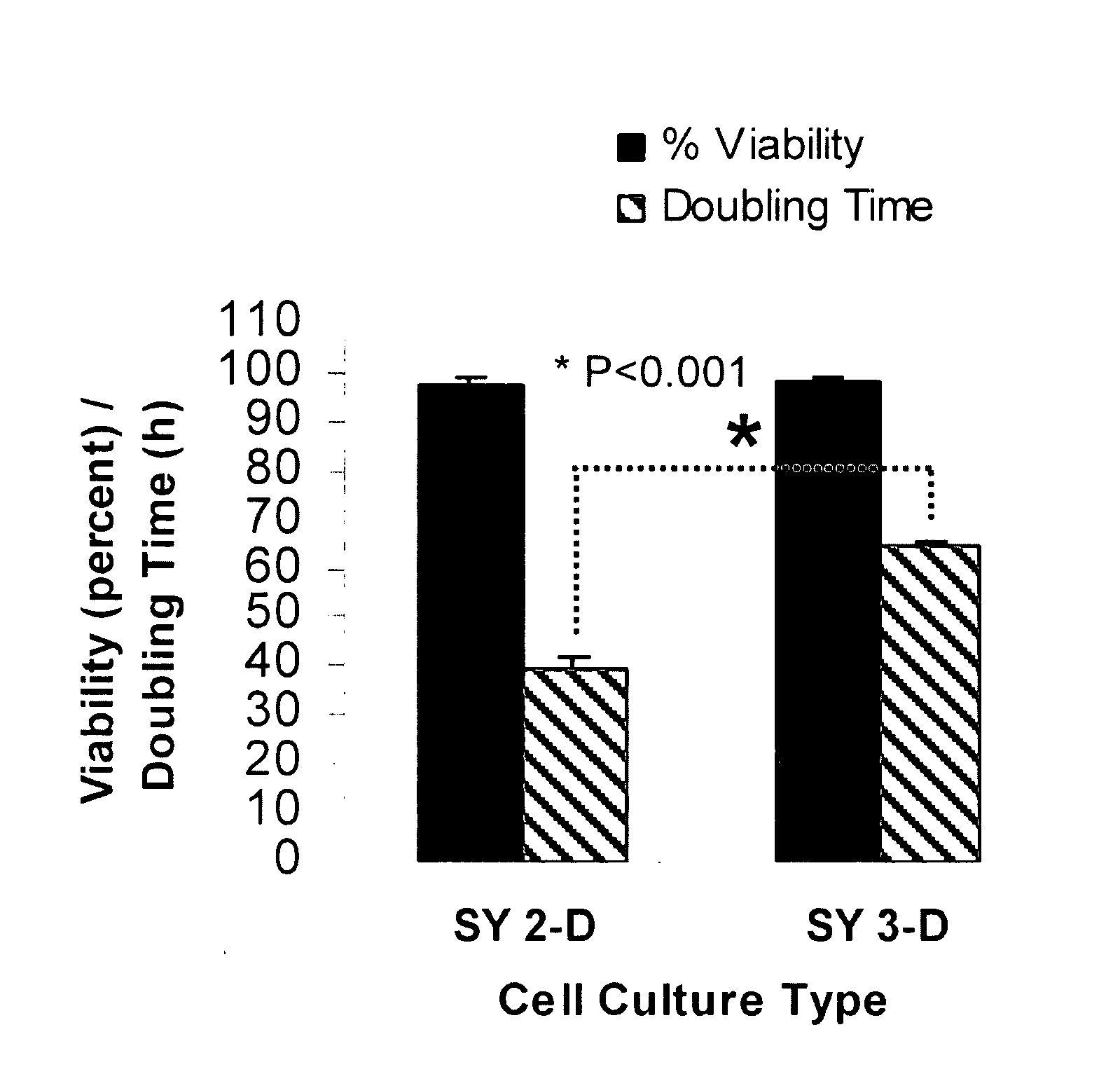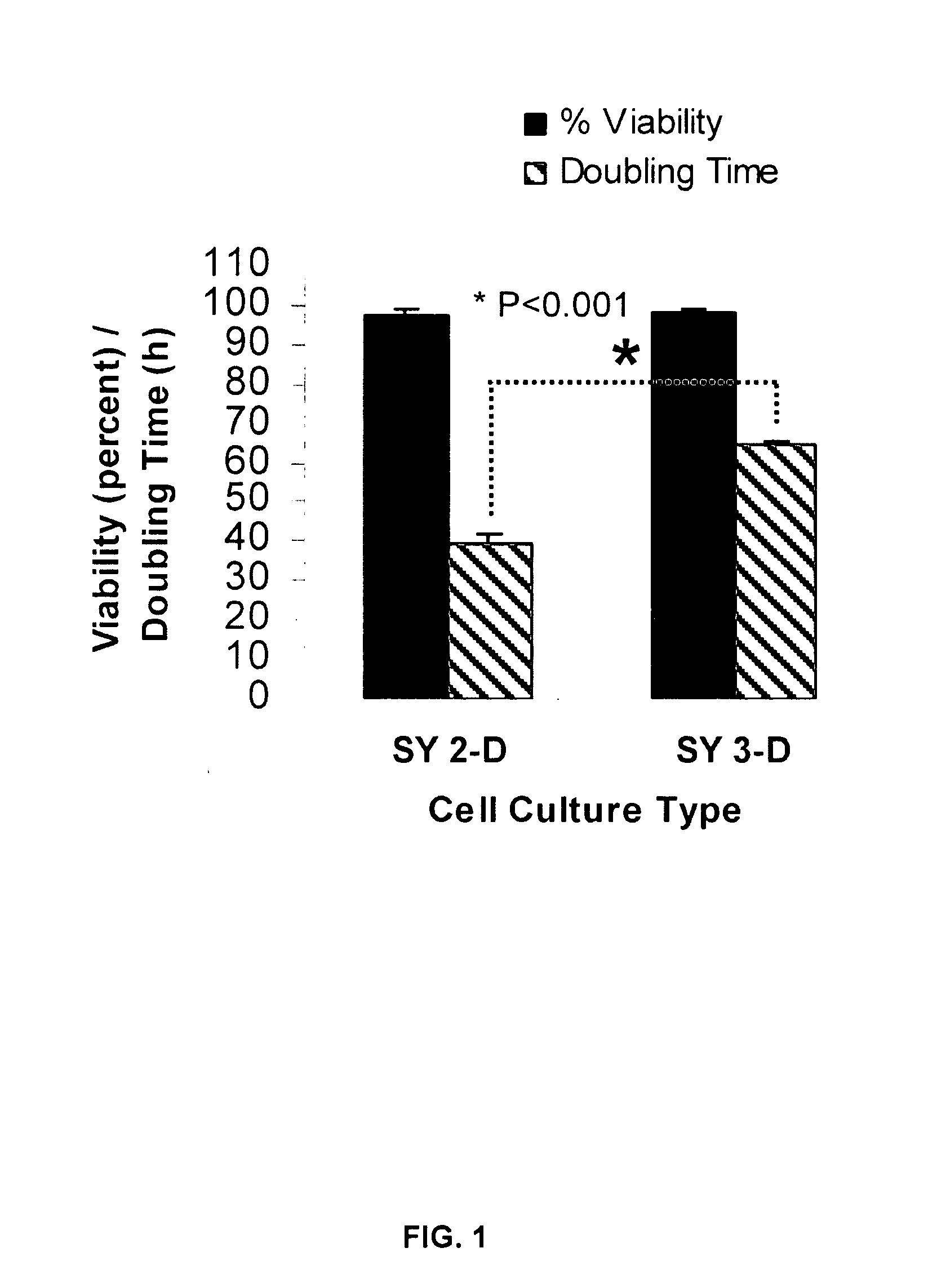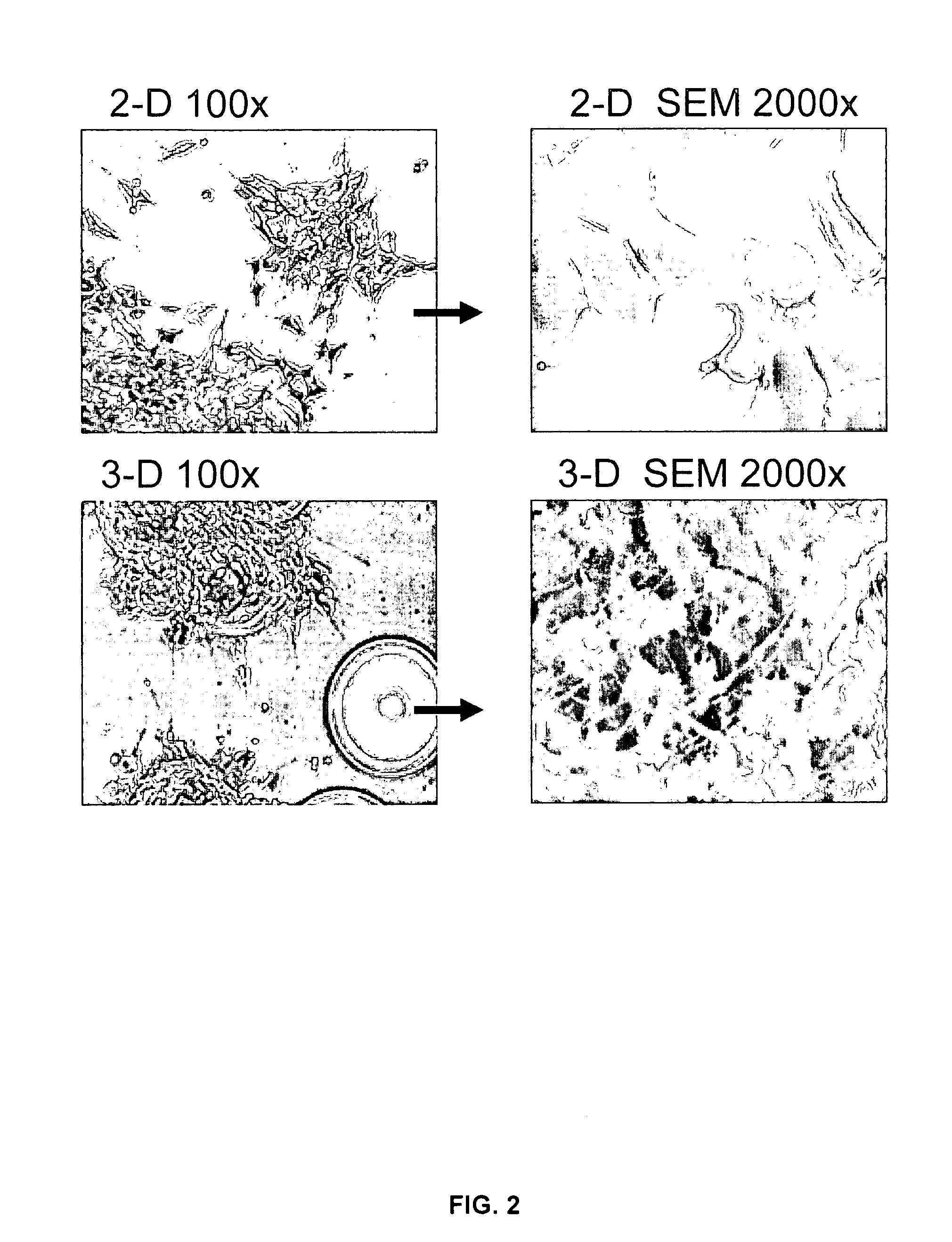Neuronal Cell Propagation Using Rotating Wall Vessel
a technology of neuronal cell and rotating wall, which is applied in the field of culturing neurons, can solve the problems of neuronal cell death in select brain areas, loss of intellectual faculties, emotional disturbance, etc., and achieves the effects of reducing doubling rate, increasing susceptibility to apoptosis, and increasing neurite formation
- Summary
- Abstract
- Description
- Claims
- Application Information
AI Technical Summary
Benefits of technology
Problems solved by technology
Method used
Image
Examples
example 1
3-D Culture Changes the Morphology and Proliferation Rate in SY Neuronal Cells
[0078]SY cells cultured for 21 days in the RWV, and then for counting purposes transferred back to 2-D culture flasks for 5 days, revealed a decrease in the cell doubling rate from 40 h to approximately 65 h, with no change in cell viability (FIG. 1). Thus, the 3-D phenotype of SY cells comprises a decrease in the cell doubling rate. Because the carrier beads used in the 3-D culture were coated in collagen, additional SY cells were cultured for 3 weeks and for 4 weeks in 2-D flasks coated with collagen. No detectable difference was observed in the morphology, cell viability or doubling rate of 2-D cells cultured on plastic as compared to collagen. Scanning electron microscopy (SEM) revealed important differences in the morphology of SY cells cultured in 2-D or in 3-D. Specifically, only the 3-D-cultured SY cells acquired a parental, tissue-like conformation with dramatic increases in neurite extension, dir...
example 2
Decreased Expression of N-myc and HuD
[0079]Human neuroblastoma cells are typically characterized by de-differentiation. They have re-entered S-phase of the cell cycle, and are highly resistant to apoptosis (Kang et al., 2006; van Noesel et al., 2003). Amplified expression of the proto-oncogene N-myc has been correlated with cellular de-differentiation and increased resistance to apoptosis, and is believed to have a crucial role in maintenance of the cells' malignant phenotype (Chagnovich and Cohn, 1996; Grandinetti et al., 2006; Smith et al., 2004; van Golen et al., 2003). The RNA binding protein HuD functions in stabilizing N-myc mRNA and may consequently enhance steady-state expression levels of this oncogene (Chagnovich and Cohn, 1996; Grandinetti et al., 2006; Lazarova et al., 1999). Reduced expression of the HuD protein could therefore contribute, through destabilization of N-myc, to an increase in cellular differentiation.
[0080]Western analysis confirmed a culture-dependent sh...
example 3
Apoptosis Resistance is Diminished in 3-D Cultured SY and PC12 Cells
[0081]Cells over-expressing the anti-apoptotic protein Bcl-2 or cells with depleted pro-apoptotic Bax and Bak exhibit resistance to cell death as induced by mitochondrial dysfunction and ER stress (Elyaman W, Terro F, Suen K C, Yardin C, Chang R C, Hugon J. BAD and Bcl-2 regulation are early events linking neuronal endoplasmic reticulum stress to mitochondria-mediated apoptosis. Brain research, 2002; 109: 233-8; Henshall D C, Araki T, Schindler C K, Lan J Q, Tiekoter K I, Taki W, Simon R P. Activation of Bcl-2-associated death protein and counter-response of Akt within cell populations during seizure-induced neuronal death. J Neurosci, 2002; 22: 8458-65; Murakami Y, Aizu-Yokota E, Sonoda Y, Ohta S, Kasahara T. Suppression of endoplasmic reticulum stress-induced caspase activation and cell death by the overexpression of Bcl-xL or Bcl-2. Journal of biochemistry, 2007; 141: 401-10; Scorrano L, Oakes S A, Opferman J T, ...
PUM
| Property | Measurement | Unit |
|---|---|---|
| pH | aaaaa | aaaaa |
| pressure | aaaaa | aaaaa |
| pressure | aaaaa | aaaaa |
Abstract
Description
Claims
Application Information
 Login to View More
Login to View More - R&D
- Intellectual Property
- Life Sciences
- Materials
- Tech Scout
- Unparalleled Data Quality
- Higher Quality Content
- 60% Fewer Hallucinations
Browse by: Latest US Patents, China's latest patents, Technical Efficacy Thesaurus, Application Domain, Technology Topic, Popular Technical Reports.
© 2025 PatSnap. All rights reserved.Legal|Privacy policy|Modern Slavery Act Transparency Statement|Sitemap|About US| Contact US: help@patsnap.com



